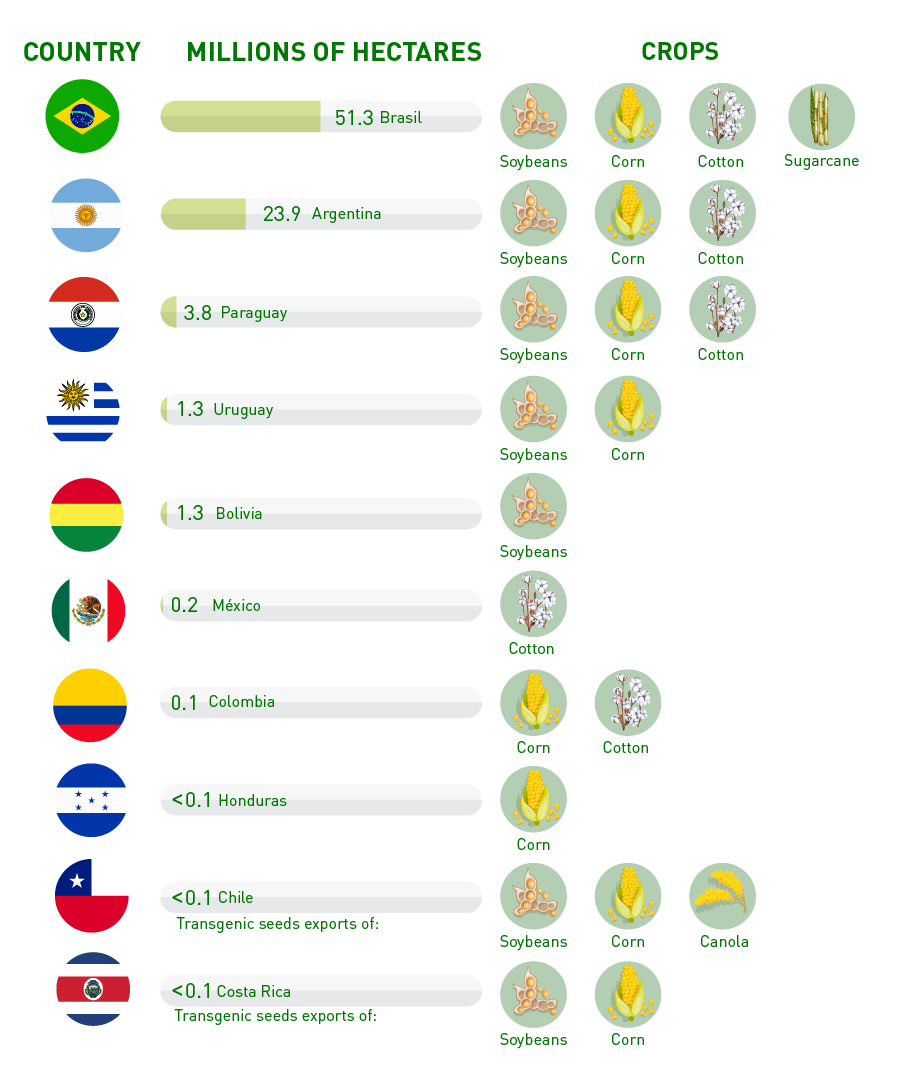
loading...

loading...
slide
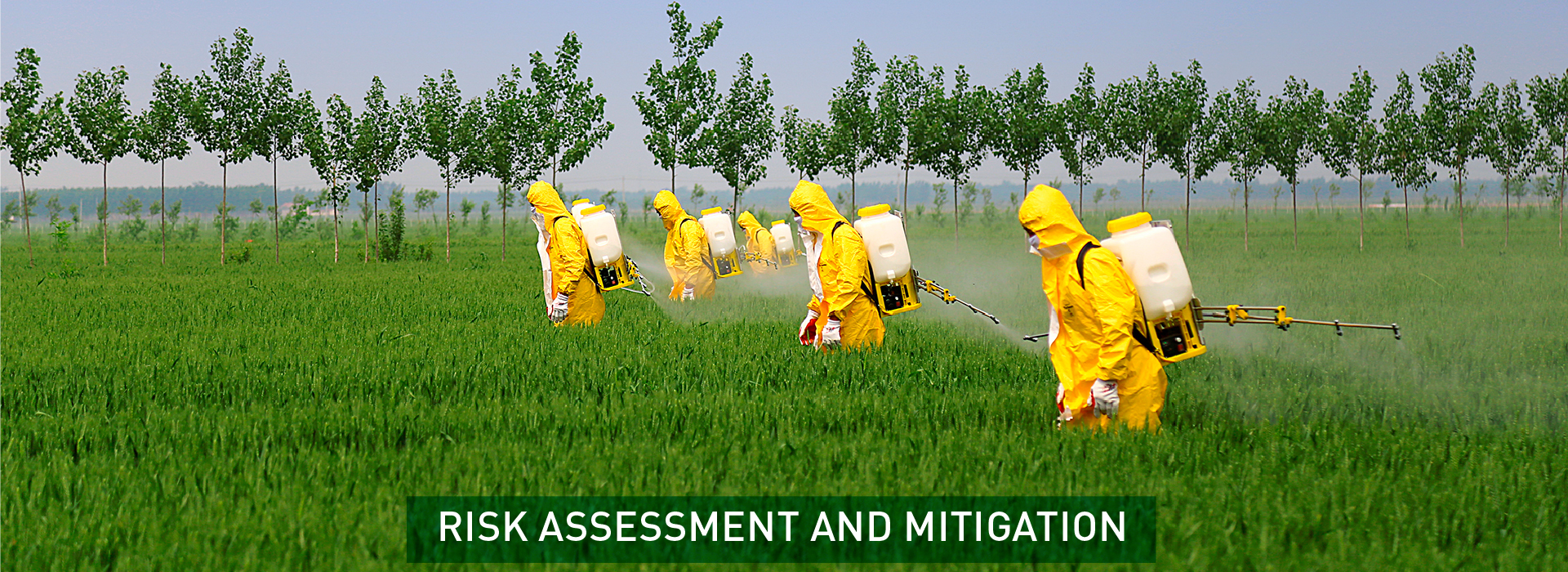
How to manage the risk of pesticides, what are the measures taken by manufacturers, international organizations, national authorities, distributors and farmers to reduce the risk when handling these products? To answer these questions, the CropLife Latin America team participated with conferences in several workshops convened by the National Associations in the region. These workshops included the participation of authorities and experts. We also organized a panel on Risk versus Hazard at the 14th IUPAC International Congress of Crop Protection Chemistry in Belgium.
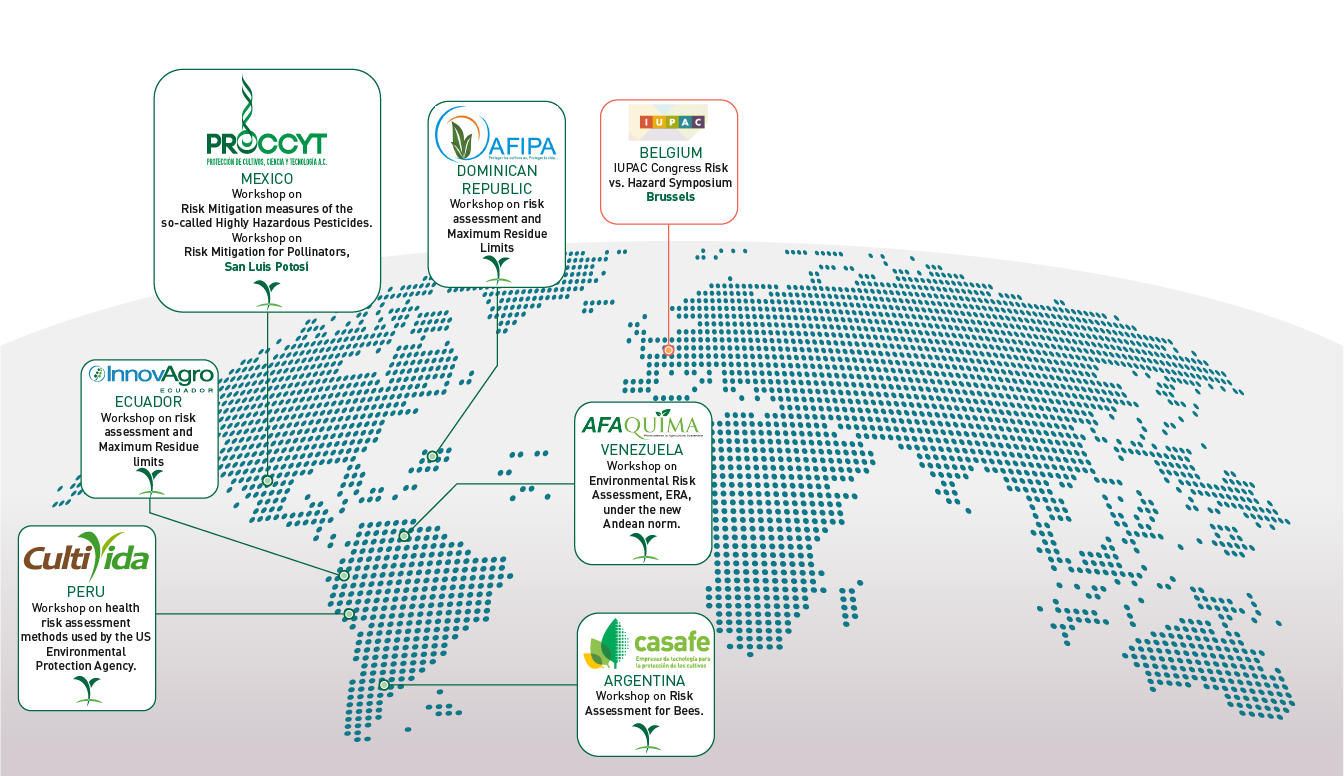
To facilitate the education on Risk Management and Mitigation, we launched a virtual course in 2019 with three modules dedicated to this topic. The importance of pesticides in agriculture, the management principles and the risk management tools for of these substances are the developed themes in this course that has been successfully completed by more than 500 people since its launch in September 2019.
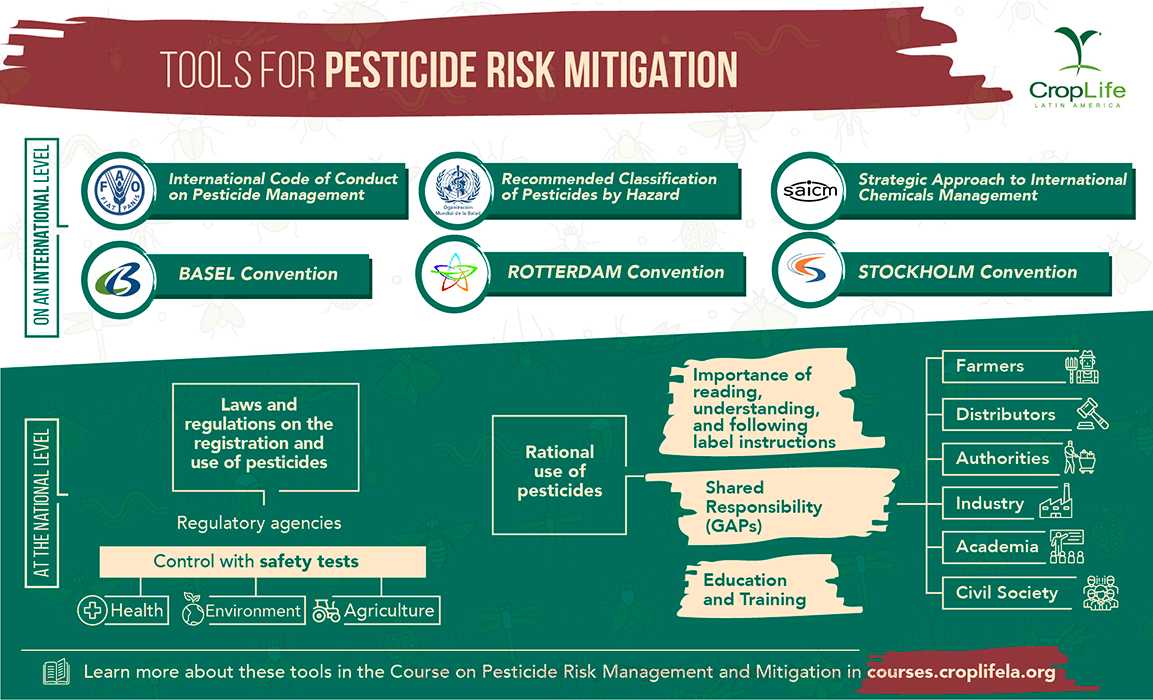
Colombia and Peru officially launched two Models for the Simulation of Pesticide Exposure in Water that strengthen and improve the registration process of agrochemicals. These are tools designed to quantify the exposure of agricultural pesticides in nearby water bodies after making an application in a given crop. The Models allow compliance with the tiered evaluation of water exposure required by the Andean Standard 804 and its Andean Technical Manual, says Richard Franklin, Director of CropLife Latin America for the Andean Region.
Both tools were presented in a scientific poster at the 13th Biennial Meeting of the Society of Environmental Toxicology and Chemistry (SETAC) held in Cartagena, Colombia, last September.
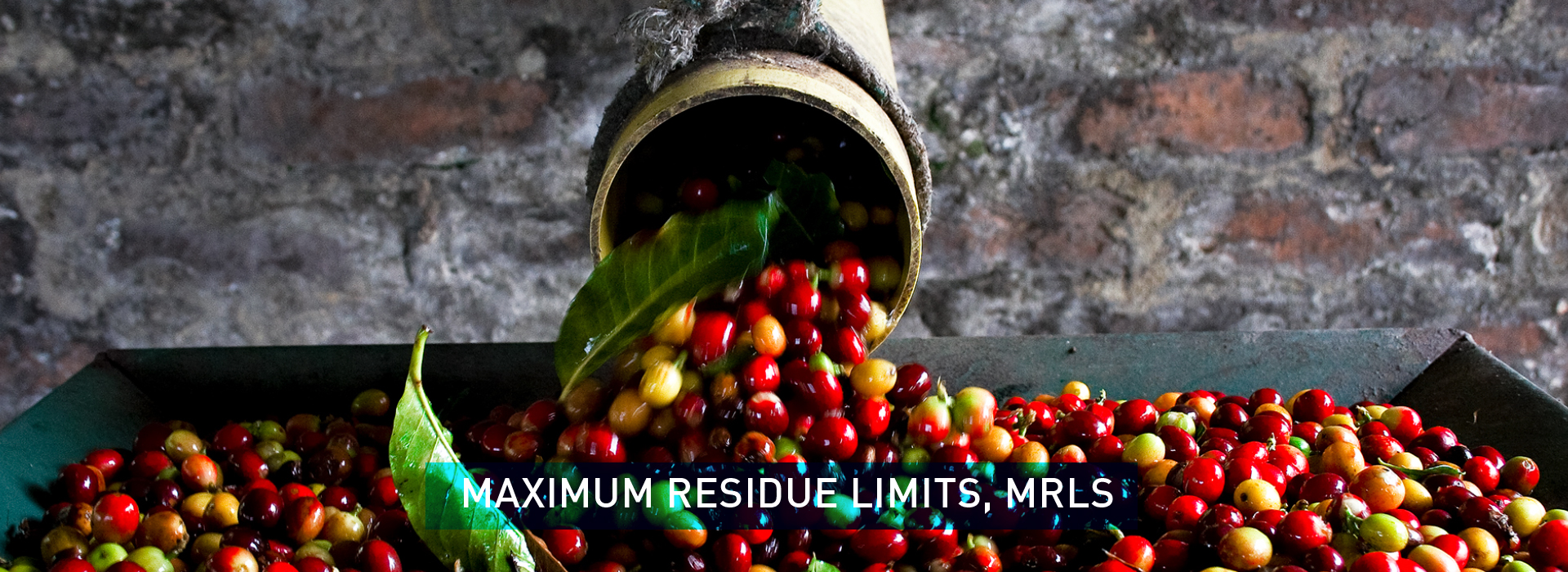
One of the main regulatory requirements to export agricultural products is related to the Maximum Residue Limits, MRLs; which are the permitted amount of pesticide residues in food in accordance with the standards of international markets.
MRLs are commercial standards that are set at levels with sufficient safety margin for human health. The problem is that they change constantly and can vary between countries and regions. This poses a great challenge for Latin American exporters who sell their harvests to the United States, Europe and Asia. Exporting farmers must be aware of changes in MRLs so that their crops are not rejected.
2019 was a very dynamic year in this area, says José Perdomo, President of CropLife Latin America, particularly for banana producers, due to the reevaluation processes in the European Union that have caused reductions in the MRLs of key molecules for fruit production and export. This situation has alarmed banana producers in Guatemala, Honduras, Costa Rica, Ecuador, Panama and Colombia, who have expressed concern about the social, economic and commercial consequences of this decision that has no scientific basis.
Modifications of MRLs should be based on conclusive scientific evidence to avoid restrictive trade measures.Agricultural producers advocate for the Codex Alimentarius to be maintained as an international reference that establishes the accepted tolerances that govern international trade.
Video Blueberries from Chile to the world, produced by CropLife International with the support of CropLife Latin America and AFIPA-Chile.
Only available in Spanish
MRLs also worry farmers of minor crops such as strawberries, and that is why it was the subject of one of the conferences at the Ninth Aneberries Congress in Guadalajara, Mexico, in July 2019. CropLife Latin America presented the challenges for the production and export of minor crops. Strawberries are the third most exported product by Mexico, with an estimated market of 2.3 billion dollars annually.
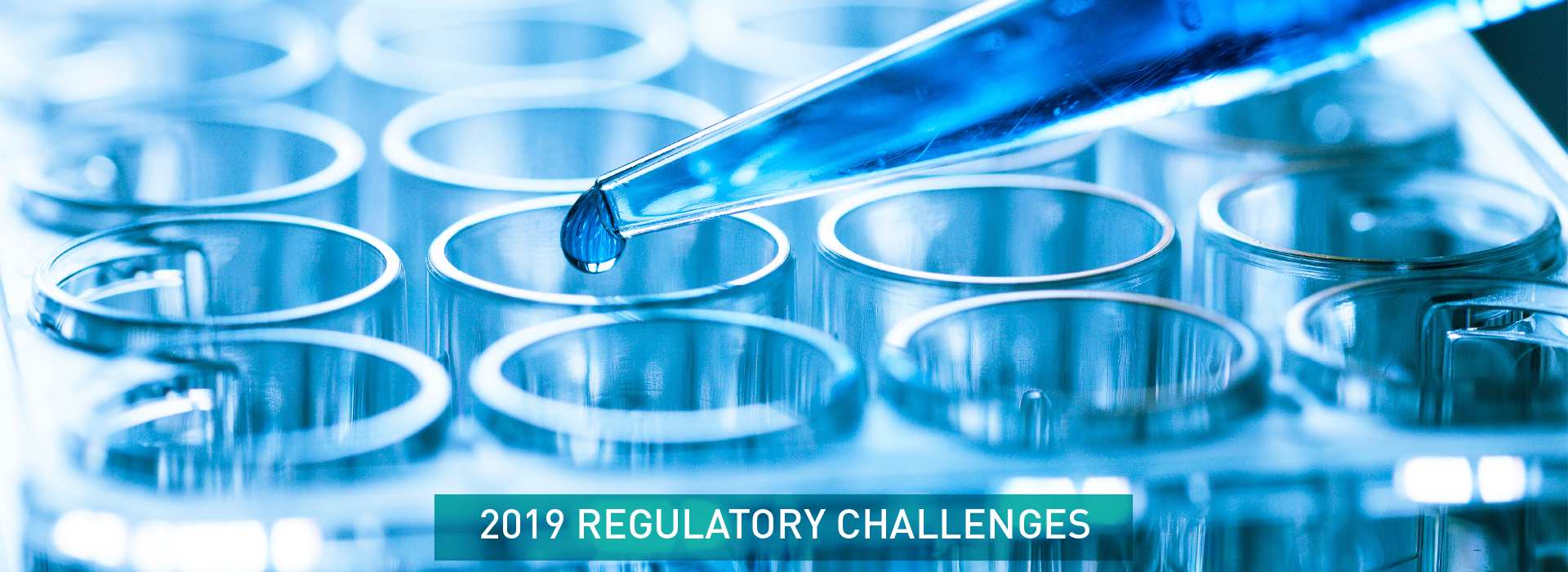
The defense of due process and science-based regulatory decisions took up a good part of the agenda of the CropLife Latin America team, of the regulatory committees of the associated companies and of the National Associations.
Restrictive regulations in other regions of the world generated similar initiatives in Latin America. With proactive dialogue and technical and scientific arguments, the national authorities maintained due process and there were no cancellations, restrictions or prohibitions.
CropLife Latin America actively participated in the Rainforest Alliance consultations conducted in 2019 for the new Certification Guide, including face-to-face workshops in Costa Rica and Ecuador. After several consultations with interested audiences, including those in the aforementioned countries, Rainforest rescheduled the publication of its new guide until June 2020.
Central America made progress in the application of the harmonized regulation for pesticide labeling, but there are still drawbacks because some countries insist on interpreting some points and do not prioritize the regional criteria, says Martín Zúñiga, Director for Central America and the Caribbean of CropLife Latin America.
Costa Rica continues without major advances in the effectiveness of the pesticide registration system, although a new regulation was approved two years ago. Because of this reason the delay in the registration of new molecules to fight pests has not been overcome.
In the Andean Region, the Andean Technical Manual for the Registration and Control of Chemical Pesticides for Agricultural Use (Resolution 2075 of 2019) was approved. This standard lays out developments that the old manual did not contain, such as the migration of the labels to the GHS system in the 60 months following the moment it enters into force, that is, on February 1, 2020. It also establishes the commitment of the authorities to issue a directive to regulate registration by equivalence, which will only be of voluntary application, and the possibility of presenting to the health authorities studies that support the non-existence of carcinogenic potential in those molecules that have been classified as such by the IARC, explains Richard Franklin, Director for the Andean Region of CropLife Latin America.
In the Southern Cone we accompanied several processes to update the registration systems of crop protection products. In Chile the modifications are related to the incorporation of registration by equivalence, and in Uruguay it is an official initiative that seeks to improve the regulatory system.
We participated in the meeting of the Group of Latin American and Caribbean Countries (GRULAC) in preparation for the meetings of the Rotterdam and Stockholm Conventions; technical information was offered there regarding proposals for lists of crop protection products in the annexes of these treaties, says Juan Cruz Jaime, Director of the Southern Cone of CropLife Latin America.
Did you know that behind a pesticide there is research, scientific support and a rigorous regulatory process?
Only available in Spanish
In Brazil, after four public consultations convened by ANVISA, regulations were issued that require the adoption of GHS labels and dietary risk analysis elements. Most notably, the guidelines rely on a risk analysis for toxicological evaluation instead of hazard cut-off criteria.

In October, the Central American Technical Regulation on Biosafety of Living Modified Organisms (LMOs) entered into force, which allows Guatemala to import, commercialize and plant modified seeds of products for human and animal consumption.
The import of such grains for food was already allowed in Guatemala, but planting and production were not. The authorization process requires documenting the type of seed, the activity in which it will be used and where it will be planted. It is estimated that the first authorizations will be given in one year.
In the case of creole corn (white), which is produced in the Guatemalan highlands, it will be protected because the modified seeds are not suitable for production in climates over 1,100 meters above sea level.
The Agreement emerged as part of the Guatemala - Honduras Customs Union, whose purpose is the free movement of goods between countries. Since 1997 Honduras is at the forefront in the commercialization and use of biotechnology, which has generated productivity benefits.
Honduras issued Agreement 008 of 2019 of the National Service of Agrifood Health and Safety, SENASA, which allows the National Committee of Agricultural Biotechnology and Biosafety, CNBBA, to approve the authorization procedure for applications related to the use of new genetic improvement techniques (precision biotechnology).
These agricultural biotechnology adoption policies open the door for Guatemala and Honduras to improve their agricultural production, promote scientific research and move towards a more sustainable agriculture, says Alejandro Hernández, Director of Biotechnology for Central America and the Caribbean of CropLife Latin America.
Biotechnology crops total more than 191.8 million hectares in the world, equivalent to the geographical area of Mexico. Most of these crops correspond to soybeans (50%), corn (30.7%), cotton (13%) and canola (10.1%). The reason why soybeans and corn are the kings of biotechnology crops is that they are used as raw material for the preparation of multiple products, especially for concentrated animal feed; as the consumption of animal protein increases, the demand for these two cereals will increase. It is a time of opportunity for the main exporters in the world that are the United States, Argentina and Brazil. The latter managed to sell 90% of soy exports to China in 2018.
Although the adoption of biotechnology is led by the United States, Brazil, Argentina, Canada and India, where 91% of the production is concentrated, in total 26 countries have opened the doors to agro-biotechnology allowing its planting.
Biotechnology adds to the multiple technological tools that farmers have today to improve their yields, reduce losses and move towards a more sustainable agriculture. . In Latin America, the adoption of biotechnology progresses positively, says José Perdomo, President of CropLife Latin America. Although Argentina and Brazil are the agro-exporting powers, other countries have advanced in legal frameworks that allow the planting and commercialization of genetically modified seeds, such as Paraguay, Bolivia, Colombia and Honduras.
79.4 million hectares of GM crops are reported in 10 Latin American countries, distributed as follows:Source: International Service for the Acquisition of Agri-biotech Applications (ISAAA).
